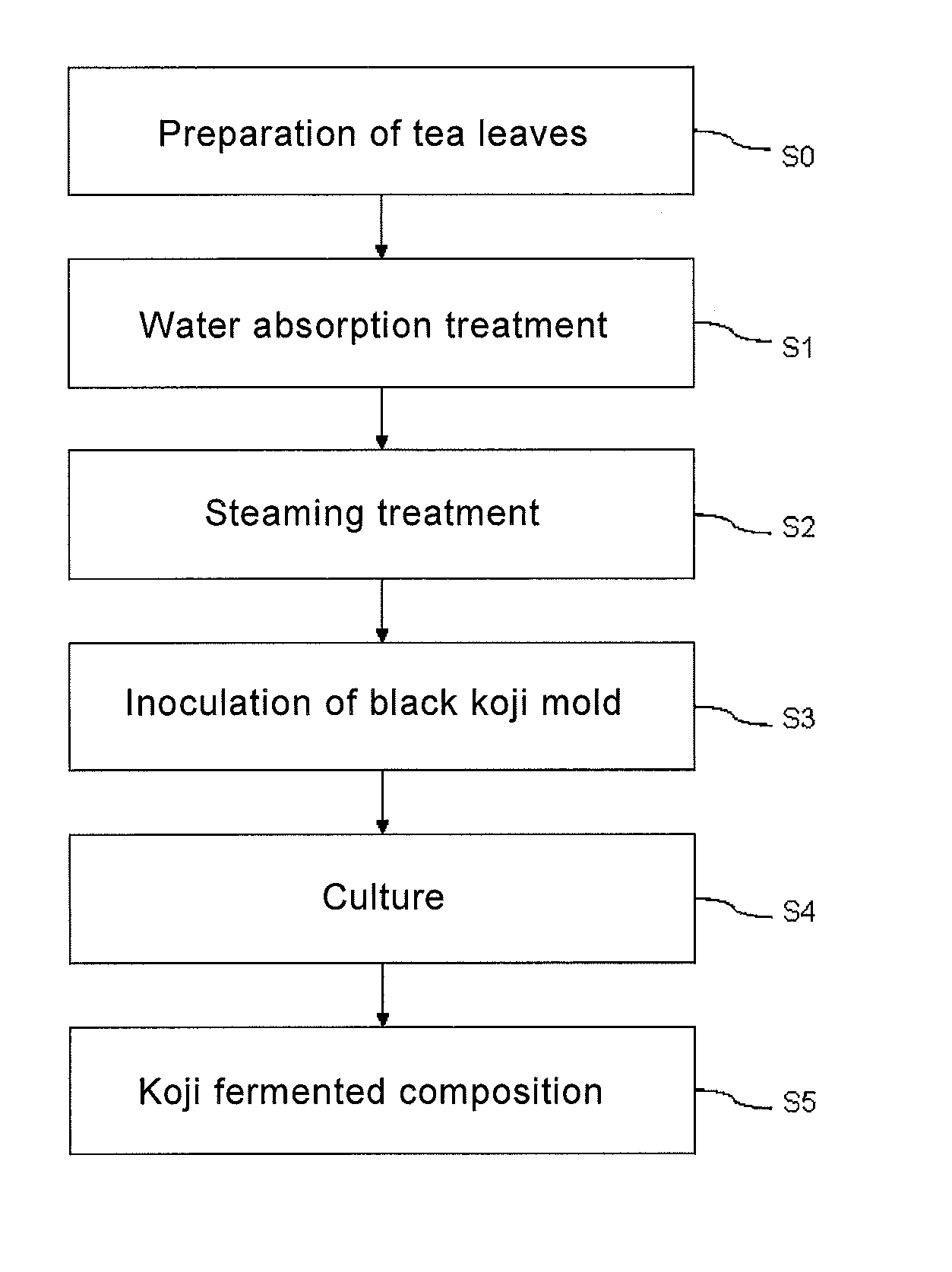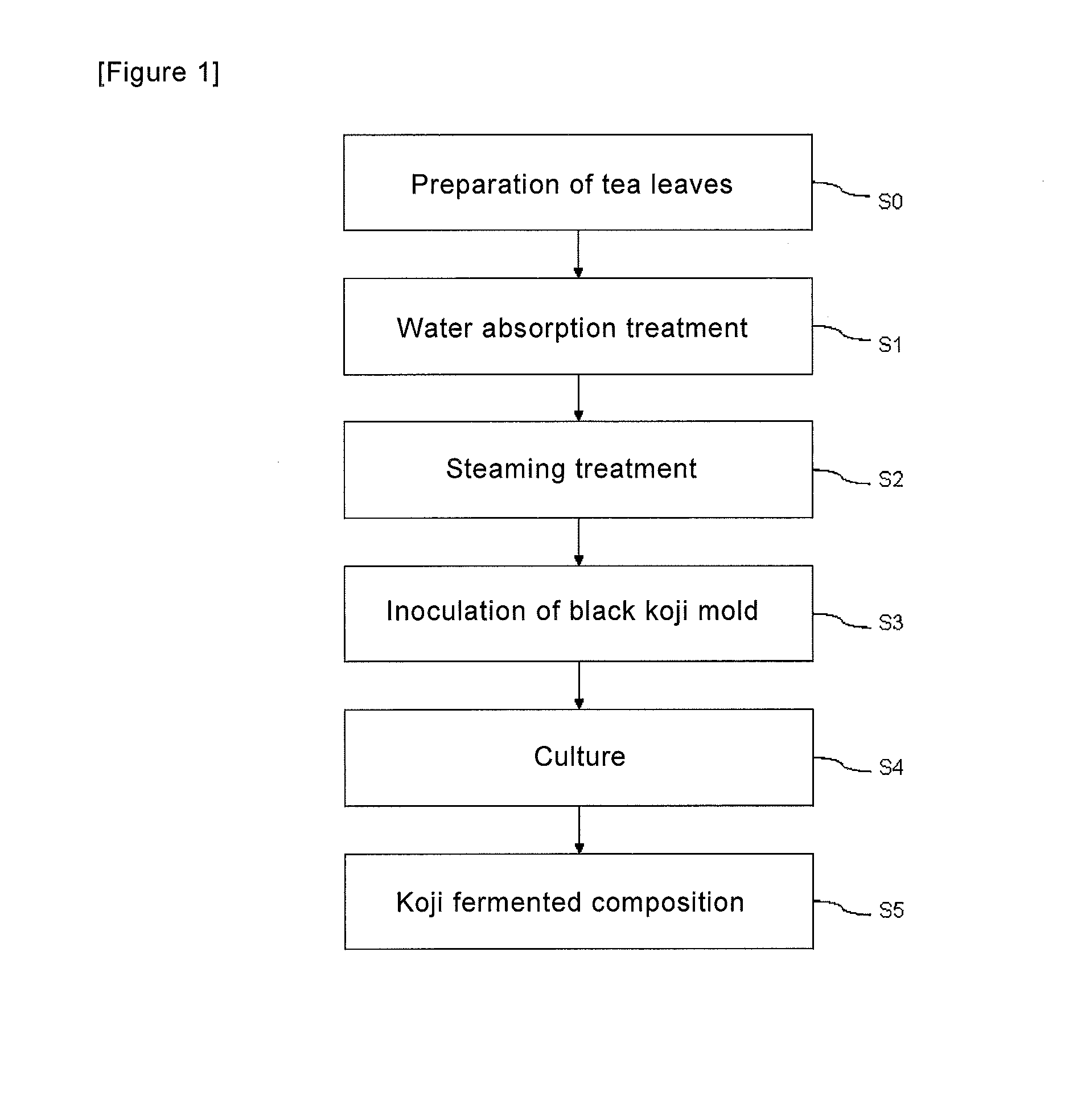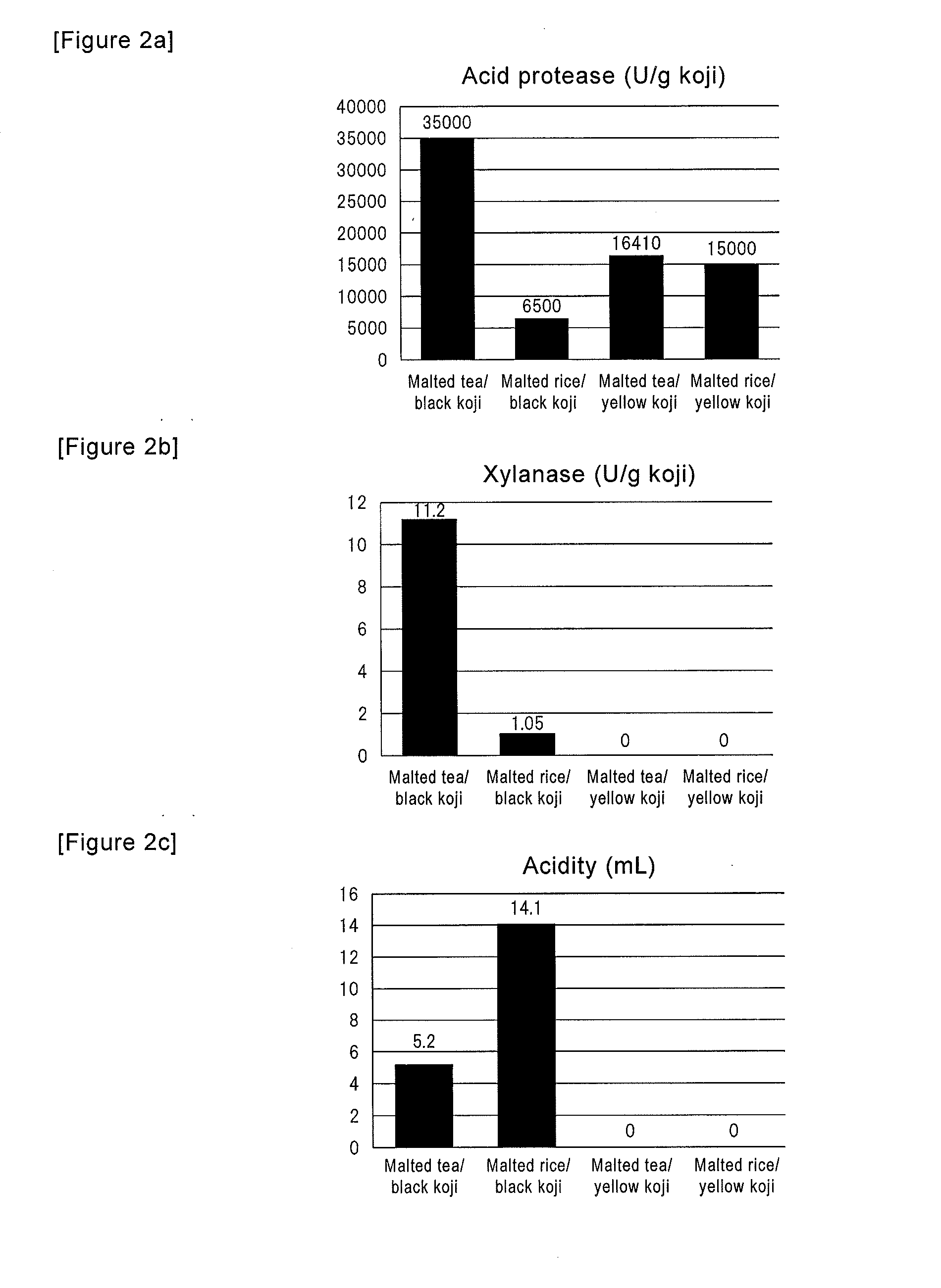Koji fermented composition, seasoning using the same, antioxidant, and food or beverage
a technology antioxidant, applied in the field of koji fermented composition, can solve the problem of large citric acid production
- Summary
- Abstract
- Description
- Claims
- Application Information
AI Technical Summary
Benefits of technology
Problems solved by technology
Method used
Image
Examples
example 1
1. Production of Koji Fermented Composition (Black Koji Mold-Based Malted Tea) by Using Black Koji Mold
[0054]Water was added to 1 kg of commercially available green tea, and the water content of the green tea was adjusted to be in the range of 30% to 40%. Subsequently, the green tea was steamed in a steamer for 60 minutes, and was then cooled to 35° C. Thereafter, 1 g of black koji mold spores (two billion of spores / g) was uniformly dispersed on the green tea. Aspergillus awamori was used as such black koji mold, and the amount of black koji mold dispersed was adjusted to be 1,000,000 or more spores per gram of the green tea used as a raw material. After inoculation of the spores, the inoculated green tea was incubated at 35° C. and thus, a culture was carried out. As fermentation has progressed, the temperature of the fermented product was increased. Thus, for 24 hours after initiation of the culture, the temperature of the fermented product was adjusted to be 40° C. or lower by bl...
example 2
5. Measurement of Enzyme Activity and Citric Acid Amount in Koji Fermented Composition
[0058]The black koji mold-based malted tea produced in Example 1 and each of koji fermented compositions produced in Comparative Examples 1 to 3 were measured in terms of the enzyme activities of acid protease and xylanase, and acidity. The enzyme activity of acid protease and the acidity were measured in accordance with the method described in the National Tax Administration Agency Prescribed Analysis (the 4th Revision National Tax Administration Agency Prescribed Analysis, Brewing Society of Japan, 1993). On the other hand, with regard to the xylanase activity, the amount of enzyme necessary for releasing 1 mg of xylose at 40° C. for 60 minutes according to the Somogyi-Nelson method was defined as 1 unit, and the enzyme activity was then measured by the above described method for measuring xylanase activity. The results are shown in FIGS. 2a to 2c. The enzyme titers of acid protease and xylanase ...
example 3
6. Confirmation of Umami-Enhancing Effect of Koji Fermented Composition
[0060]In order to confirm what influence the black koji mold-based malted tea of the present invention produced in Example 1 and each of koji fermented compositions produced in Comparative Examples 1 to 3 would have on food materials, the following test was carried out. First, koji fermented compositions produced in Example 1 and Comparative Examples 1 to 3 were each subjected to low-temperature dehumidification drying, so that they were processed in powdery koji fermented compositions. Subsequently, 30 mg of such each powdery koji was uniformly sprinkled on 100 g of a pork meat, and the pork meat was then left at rest in a refrigerator at 4° C. for 12 hours. Thereafter the pork meat was removed from the refrigerator, and the content of free glutamic acid in the pork meat was then quantified. Also, a pork meat, on which koji had not been sprinkled and no treatments had been performed, was also quantified in terms...
PUM
| Property | Measurement | Unit |
|---|---|---|
| temperature | aaaaa | aaaaa |
| temperature | aaaaa | aaaaa |
| temperature | aaaaa | aaaaa |
Abstract
Description
Claims
Application Information
 Login to View More
Login to View More - R&D
- Intellectual Property
- Life Sciences
- Materials
- Tech Scout
- Unparalleled Data Quality
- Higher Quality Content
- 60% Fewer Hallucinations
Browse by: Latest US Patents, China's latest patents, Technical Efficacy Thesaurus, Application Domain, Technology Topic, Popular Technical Reports.
© 2025 PatSnap. All rights reserved.Legal|Privacy policy|Modern Slavery Act Transparency Statement|Sitemap|About US| Contact US: help@patsnap.com



